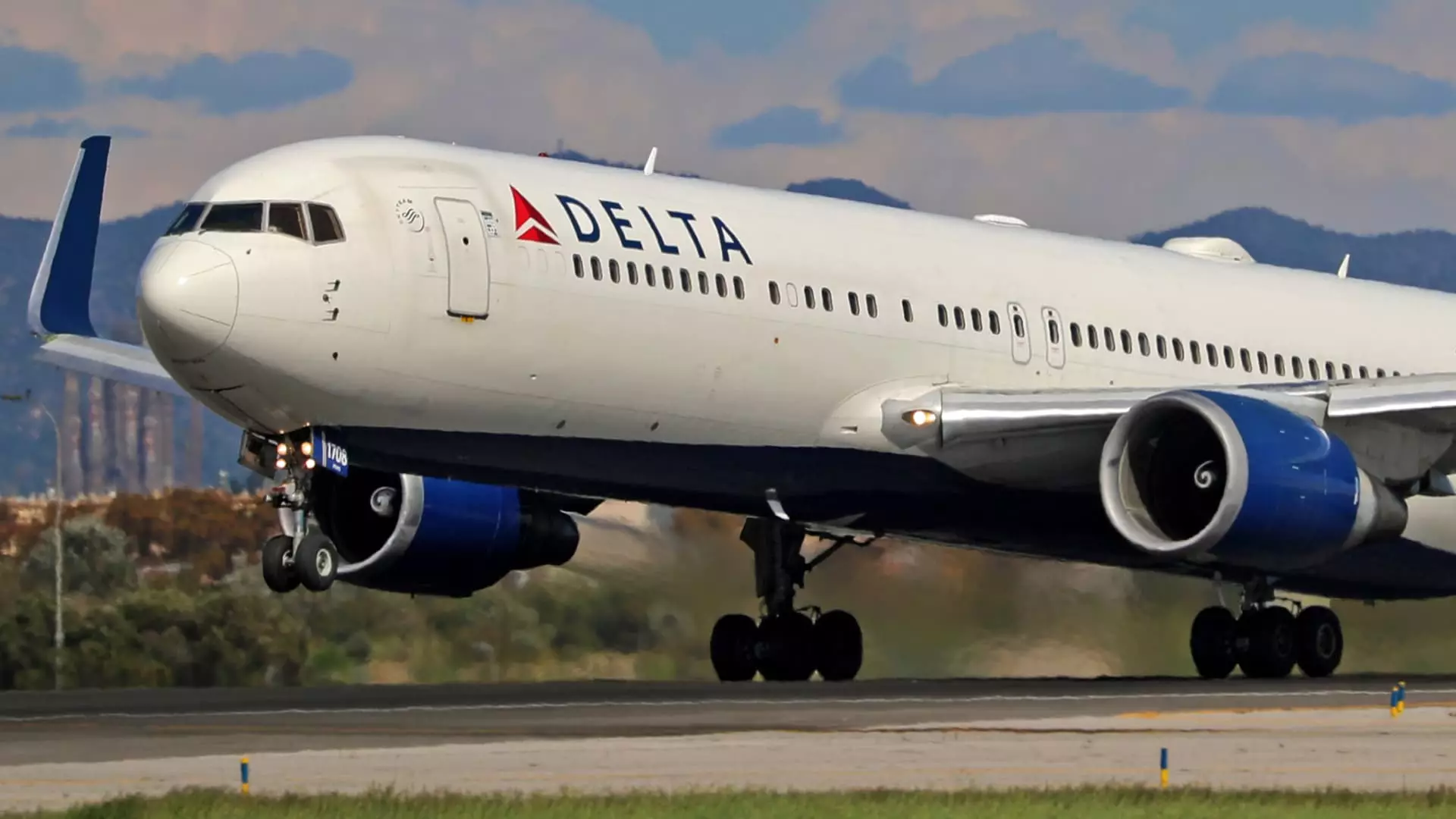The airline industry, once a beacon of resilience in a turbulent economy, now stands fraught with challenges that are beginning to chip away at its robust facade. As signs of waning travel demand proliferate—especially from Canada and transatlantic routes—the air travel sector is facing unprecedented headwinds. With government layoffs increasing and tariffs surging, travelers are exhibiting a noticeable hesitance to book trips. It’s difficult not to feel a sense of déjà vu as we witness the onset of what analysts are dubbing a legitimate crisis in the airline industry, reminiscent of those calamitous days in 2020 when the pandemic forced borders shut and air traffic ground to a halt.
This decline in bookings is alarming not only to industry executives but also to the stock market, which has seen one of its most significant downturns in years. Analysts from Raymond James made a notable observation: “Clearly, things are softer than they were in January.” Such sentiments echo the frustrations of airline leaders who have been heralding pent-up consumer demand and revitalization in the travel sector since the pandemic’s peak. However, it appears that the euphoric post-pandemic resurgence is giving way to a reality-check that no one saw coming.
Turbulence Ahead: Earnings Woes and Price Target Reductions
The immediate consequence of this shifting landscape is palpable in the financial estimates of U.S. airlines. Major carriers like Delta, American, and Southwest are poised to reduce their earnings forecasts, which is a clear indicator that their optimistic projections were perhaps overly ambitious. The market is responding unfavorably to these adjustments, with airline stocks nosediving—Delta alone has plastered a staggering 38% loss in value. There is a palpable fear gripping investors, most notably as previously untouchable airline stocks are now subject to drastic downgrades and slashed price targets.
This reaction can be attributed not only to diminishing consumer demand but also to the broader economic paradigm taking shape. There’s a new reality to grapple with—one characterized by persistent inflation, selective travel behavior among consumers, and unsettling isolationist tendencies propelled by political decisions. TD Cowen analysts made a dire prediction that this economic climate could “significantly disrupt the competitive environment for airlines,” hinting at a troubling metamorphosis that could leave the industry irrevocably altered.
Corporate and Leisure Travel Under Duress
One of the troubling trends that has surfaced is the drying up of corporate travel revenue, which, while only a percentage of total business, often translates to millions for airlines. Major layoffs and cost-cutting measures have led to a contraction in this sector, creating additional uncertainty about the future of corporate air travel, especially as companies like Deloitte implement significant reductions in their travel budgets.
Leisure travel, which had previously surged, now appears to be faltering as well. U.S.-Europe bookings for the upcoming summer months have already decreased by about 13% year-over-year, a sign that even vacationers are reevaluating their priorities amid economic unease. While some industry leaders remain optimistic that higher-income travelers will continue to fill premium seats, the reality remains that many consumers are “pulling back” from travel altogether.
Government Policies and Their Impact on the Industry
Compounding these challenges are policies set forth by government officials, which have led to increased tariffs on international goods—a move that is likely to exacerbate operating costs and reduce disposable incomes for travelers. This stark policy shift, particularly under the Trump administration, has laid the groundwork for a strained relationship between airlines and their consumers. Meanwhile, the Bank of America Institute offered a revealing perspective, suggesting that decreasing consumer confidence is being translated into reticence in making travel plans.
When ordinary people feel economically insecure, the instinctive response is often to cut luxury expenses—travel being chief among them. As we rumble through this turbulent period, it is hard to ignore the looming question of how airlines will adapt. Their ability to fend off further declines may rest upon stimulating demand through creative pricing models, especially for frequent fliers, though whether this will be enough to mitigate the broader issues at play remains to be seen.
The Uncertain Route Ahead
As we observe the airline industry grappling with these shifting dynamics, the question becomes less about whether demand will return to pre-pandemic levels and more about what the future landscape will look like. With a perfect storm of unfavorable circumstances swirling overhead, it is paramount that airline executives recalibrate their approaches to meet both consumer and market demands effectively. Forward-looking strategies will certainly be critical in redefining the industry’s trajectory, but whether they can bounce back from this downturn effectively remains uncertain, creating a landscape rife with potential, yet fraught with risk.


Leave a Reply